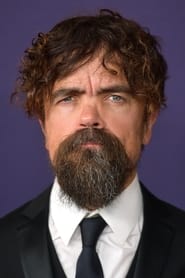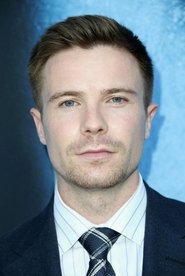
Ask Your Own Question
What is the plot?
In "Histories & Lore: Braavos," the episode begins with a sweeping view of the city of Braavos, showcasing its iconic landmarks such as the Titan of Braavos, a colossal statue that stands guard at the entrance of the harbor. The narrator describes Braavos as a city built on water, emphasizing its unique architecture and the intricate canals that weave through it. The visuals highlight the bustling activity of ships and merchants, setting the stage for the rich history of this Free City.
The narrative then shifts to the founding of Braavos, recounting how it was established by a group of escaped slaves from Valyria. These former captives sought refuge in the lagoon, where they built their new home, free from the tyranny of their former masters. The episode illustrates the determination and resilience of these individuals, showcasing their efforts to create a society based on freedom and independence.
As the story progresses, the episode delves into the significance of the Iron Bank of Braavos, one of the most powerful financial institutions in the world of Westeros. The narrator explains how the Iron Bank operates, lending money to various factions and kingdoms, and how its influence extends far beyond the borders of Braavos. The visuals depict the bank's grand architecture and the meticulous processes involved in its operations, emphasizing its role as a key player in the political landscape.
The episode also explores the culture of Braavos, highlighting its unique customs and traditions. The narrator describes the importance of the arts, particularly the theater, in Braavosi society. The visuals showcase performances and festivals, illustrating the vibrant life of the city and its inhabitants. The episode emphasizes the value placed on storytelling and the arts as a means of preserving history and culture.
A significant portion of the episode is dedicated to the Faceless Men, a mysterious guild of assassins based in Braavos. The narrator explains their philosophy of death and the concept of "the many-faced god." The visuals depict the House of Black and White, the guild's temple, where initiates undergo rigorous training to become Faceless Men. The episode captures the eerie atmosphere of the temple, highlighting the transformation of individuals into faceless assassins.
The episode concludes with a reflection on Braavos' role in the larger narrative of "Game of Thrones." The narrator emphasizes the city's independence and its complex relationships with other regions, particularly Westeros. The visuals return to the bustling streets of Braavos, leaving viewers with a sense of the city's enduring legacy and its impact on the world around it.
What is the ending?
In "Histories & Lore: Braavos," the episode concludes with a detailed exploration of the city of Braavos, its significance in the world of Westeros, and its unique culture. The narrative emphasizes the city's role as a center of trade and finance, showcasing its iconic landmarks like the Titan of Braavos and the House of Black and White. The episode does not follow a traditional plot structure with characters facing conflicts or resolutions but instead serves as an informative piece that enriches the viewer's understanding of Braavos and its influence on the larger story of "Game of Thrones."
As the episode unfolds, it begins with a sweeping view of Braavos, revealing its majestic canals and towering structures. The camera glides over the water, capturing the bustling activity of merchants and sailors, illustrating the city's vibrant economy. The Titan of Braavos stands tall, a symbol of the city's strength and independence, watching over the harbor as ships come and go, laden with goods from across the seas.
The narrative then shifts to the House of Black and White, a mysterious temple dedicated to the Many-Faced God. Here, the episode delves into the lore surrounding the Faceless Men, a secretive order of assassins who can change their appearance at will. The viewer learns about their philosophy of death and the importance of serving the Many-Faced God, which adds a layer of intrigue to the story.
As the episode progresses, it highlights the significance of Braavos in the context of the larger conflict in Westeros. The city is portrayed as a refuge for those seeking freedom from tyranny, a place where the oppressed can find solace. This theme resonates with the journey of characters like Arya Stark, who seeks to escape her past and find her identity in this foreign land.
The episode concludes with a reflection on Braavos' enduring legacy and its role in shaping the destinies of those who cross its paths. The final scenes emphasize the city's dual nature as both a place of opportunity and danger, leaving viewers with a sense of wonder about the stories yet to unfold in this rich and complex world.
Overall, "Histories & Lore: Braavos" serves as a captivating exploration of a pivotal location in the "Game of Thrones" universe, enriching the viewer's understanding of the intricate tapestry of characters and conflicts that define the series.
Is there a post-credit scene?
In the episode "Histories & Lore: Braavos" from the "Game of Thrones" specials, there is no post-credit scene. The episode focuses on the rich history and lore of Braavos, narrated by various characters from the series. It delves into the founding of the city, its significance as a powerful trading hub, and the unique cultural aspects that define Braavos, such as the Iron Bank and the Faceless Men. The narrative is presented in a way that immerses viewers in the mystique of Braavos, but it concludes without any additional scenes or content after the main feature.
What is the significance of the Iron Bank of Braavos in the story?
The Iron Bank of Braavos plays a crucial role in the political and economic landscape of Westeros. It is known for its immense wealth and influence, often lending money to various factions, including the Lannisters and Stannis Baratheon. The bank's motto, 'The Iron Bank will have its due,' signifies its relentless pursuit of repayment, which drives many characters' actions and decisions throughout the series.
How does Braavos' culture and society differ from that of Westeros?
Braavos is characterized by its unique culture, which is heavily influenced by its history as a free city. Unlike the feudal system of Westeros, Braavos operates on a more mercantile basis, valuing trade and wealth. The city is known for its diverse population, tolerance of different religions, and the presence of the Faceless Men, a secretive guild of assassins that adds to the city's mystique.
What role do the Faceless Men play in Braavos?
The Faceless Men are a guild of assassins based in Braavos, known for their ability to change their appearance and assume different identities. They worship the Many-Faced God and believe in the sanctity of death. Their presence in Braavos adds a layer of intrigue and danger, as they are often hired for high-profile assassinations, and their philosophy challenges the notions of identity and mortality.
What is the history behind the founding of Braavos?
Braavos was founded by a group of escaped slaves from Valyria who sought refuge in the waters of the lagoon. They established a new society based on freedom and trade, which allowed them to thrive and become one of the most powerful cities in the world. The city's history is marked by its independence and its ability to resist outside control, which is a source of pride for its citizens.
How does Arya Stark's journey to Braavos impact her character development?
Arya Stark's journey to Braavos marks a significant turning point in her character development. After escaping from Westeros, she seeks out the Faceless Men to learn their ways and gain the skills necessary for revenge against those who have wronged her family. This journey challenges her identity and forces her to confront her past, ultimately shaping her into a more complex and formidable character.
Is this family friendly?
"Histories & Lore: Braavos" from the "Game of Thrones" specials is not particularly family-friendly. The content includes themes and imagery that may be objectionable or upsetting for children or sensitive viewers.
-
Violence and Conflict: The history of Braavos includes references to battles, piracy, and the harsh realities of life in a city built on trade and conflict.
-
Dark Themes: The narrative touches on themes of betrayal, survival, and the moral complexities of power, which may be difficult for younger audiences to grasp.
-
Mature Concepts: Discussions about slavery, the consequences of war, and the darker aspects of human nature are present, which may be unsettling.
-
Visual Imagery: While the episode is animated, the visuals may still depict scenes of destruction or the aftermath of conflict that could be distressing.
Overall, the episode contains elements that may not be suitable for all viewers, particularly younger children or those sensitive to such themes.
























